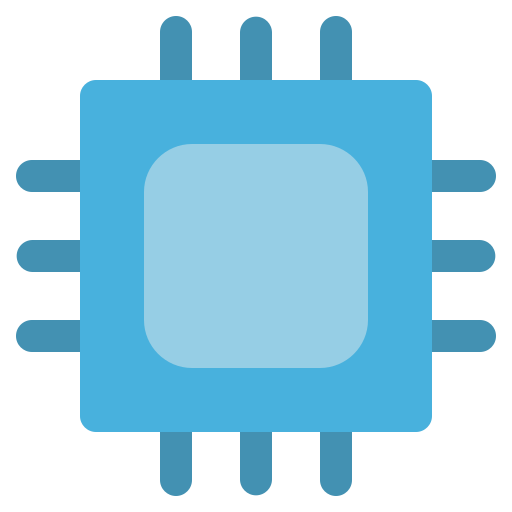Alphane Moon
That there is no perfect defense. There is no protection. Being alive means being exposed; it’s the nature of life to be hazardous—it’s the stuff of living.
- 1.55K Posts
- 1.73K Comments

 2·14 days ago
2·14 days agoIt means that they thought this was good and convincing sounding market copytext.

 6·10 days ago
6·10 days agoTo be honest, I would say moderation problems are between LW and ML are not comparable.
I would even argue there isn’t any instance-specific issue with LW for new users.

 2·15 days ago
2·15 days agoYes, waiting for more migration features.

 2·15 days ago
2·15 days agoI’ve moved a small community over. For Hardware, I am waiting for programmatic migration tools.

 206·15 days ago
206·15 days agoLemmy, once you get past the landing page that looks like it’s selling server storage, half the subs are devoted to things like Marxism.
))) The tankie reputation (even though it’s not justified at all) strikes again.

 71·15 days ago
71·15 days agoA lot of the “less active ones” are completely dead. Many mid-tier topics (not niche, but not “meme shitpost”) have a sea of dead communities and 1-2 active ones and it’s difficult to find them without actually clicking through the full list of results.

 7·15 days ago
7·15 days agoDoesn’t this also connect to Mastodon?
Also funny how every instance seems to have furry/anime motifs. Nothing wrong with that, I am a big fan of some 80s/90s and early 2000s anime, just thought it’s funny. :)

 3·15 days ago
3·15 days agoThat said, for $2K I’d be looking for something with a Ryzen AI MAX+ 395 and 128 gigs of RAM in it.
As you said, for $2K (I am assuming the real price is closer to $2,200 if it’s US style list prices) it is reasonable to expect a Strix Halo system.
The 7940HS is Zen 4 from ~3 years ago. Single thread performance isn’t all that great by modern standards and MT is subpar. Considering the form factor, it’s probably not much better than a 5800X (in a real case with strong cooling) from ~5 years ago.
It’s reasonable to expect that a professional, “computers for experts” that’s “made for making”, has strong ST performance and especially MT for $2K+. Not all professional use cases benefit from GPU compute, many require both ST and MT CPU performance.
I would argue it’s not deceptively good.

 4·15 days ago
4·15 days agoMight be worth trying:
https://piefed.social/user/settings -> UI -> Themes.

 5·15 days ago
5·15 days agoYes, I personally like Piefed better (as I said, I keep this account to mod [email protected]).

 131·15 days ago
131·15 days agoI know. I moderate [email protected] which I joined initially when finding out about Fedi. I actually started posting/modding there because the only other tech hardware community was on ML. I otherwise I use Piefed.
I am talking about people in general who don’t know the nuances of Lemmy/Piefed/Mbin and the Fediverse in general.
The lead developer being a fake communist (based in America no less 😂) and supporting russian genocidal imperialism is not a good look for an alternative social network (more so people for living in Europe).

 123·15 days ago
123·15 days agoThe fact that Lemmy devs are genocidal tankies (and manage two of the three tankie instances) is a major issue if you are from Europe and you don’t know about how Fedi functions.

 16·15 days ago
16·15 days agoInteresting and unique design.
Radeon 780M iGPU for a $2 K price (I am assuming this is American style list pricing, even if they are London based) seems like a unattractive proposition.
The lack of detailed specifications on their webpage conflicts with the “Computers for experts” marketing.
An expert would want to know the SSD is used and the exact RAM model.
The staffing and funding is the real difficult part.
Agreed. I will also add that a lack of leadership and gumption is also a challenge. You need commitment and inspiration to successfully execute such a project in a democracy.
I am not technical enough to evaluate whether what I am saying is correct, but my concern with using AOSP is that such a decision will result in 2nd tier clone apps.
It seems to me it would make much more sense to leverage industry policy (technical requirements, grants for developers) to develop a “clean slate” solution.
I had a Nokia N900, it worked pretty well for 2010 (apps weren’t as big then and mobile web worked surprising well). I am done with Android and American corruption. I am not buying another Android phone; looking forward to getting a Jolla device once they add support for Ukraine (even with no official support).
You are likely correct that forking Android would be a better (cheaper and more efficient) option. But I can’t get rid of the feeling that it’s best to do a clean break with American oligarchy and make design choices that reflect regional priorities.
Agreed. Hardware supply chains and ecosystem externalities are an extremely challenging area and it will take both industrial policy and de facto tariffs to raise the cost of devices with non-local components.
I was refering to the software/OS. An operating system and platform that has nothing to do with Android, iOS or HarmonyOS. I think in theory, software can have faster market adoption.

 41·15 days ago
41·15 days agoNot a hardware domain, but the same could be said for NFTs or “web 3.0”. With the caveat that 3D TV isn’t a scam.
How it does very well and it even gets up to 10K+.
I just realized that I can’t pre-order even if I wanted to since I am not in EU/UK/Norway/Switzerland.
We really need an Android alternative with no involvement from American or Chinese companies.

 921·15 days ago
921·15 days agoThe writing was on the wall when they started getting American VC money.
American VC culture is anthenema to truly user focused products.



I hope they are able to get 25K pre-orders and expand their geographic sales coverage after that.